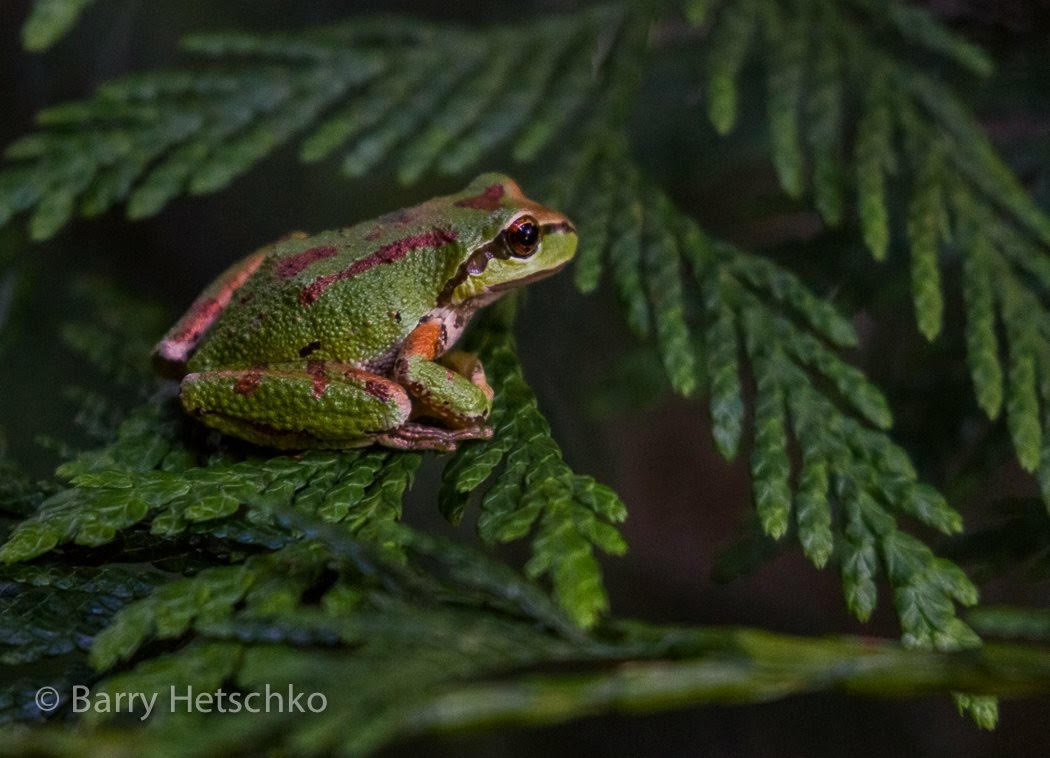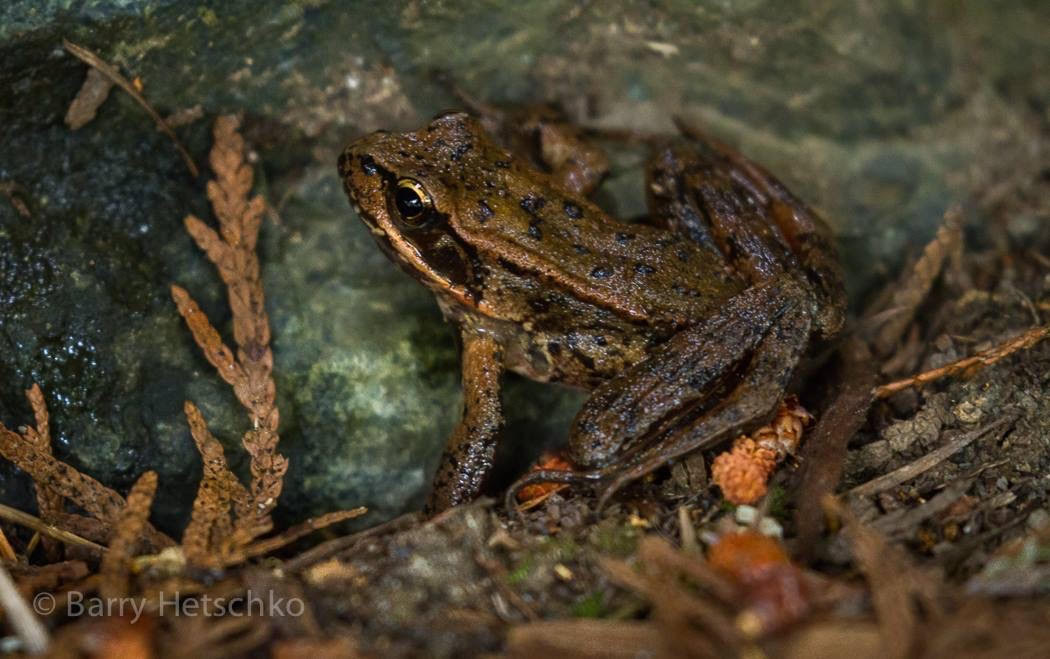One of the most welcome signs of Spring is the chorus of frogs. If you are lucky enough to have a wetland area near where you live, you will know what I mean. The tiny Pacific Tree Frog (also called the Pacific Chorus Frog) is the one most common to me. The Scientific name for this frog is Pseudacris regilla.

Pacific Tree Frog photo by Barry Hetschko
The genus name for the Pacific Tree Frog has changed quite recently. It used to be Hyla regilla and I could remember that name, because a well-known Herpetologist at UVic told a story that if you were ever unfortunate enough to see one squashed on the road, it would look “highly irregula”. Dark humour to be sure, but this leads to our concern about the migration of amphibians – often crossing roads. Add in the fact that this often happens on dark, rainy nights, it means hundreds of amphibians are killed by automobiles.
It is fun to catch a toad, frog or salamander and have a close look at it, but please remember that these animals are ectothermic. That means they pick up the heat from your hand and their body temperature may rise to a dangerous level for them. 
Young Western Toad photo by Steve Mitchell
If you want to study them for a while, put them into a plastic container, like a margarine or yogurt container. Some of these amphibians actually breathe through their skin, so it is very important not to handle them for long periods. After your look, put them back where you found them. Most amphibians need water to reproduce, but once hatched and metamorphosed from tadpole to adult, they may travel long distances through forests, away from water – always returning to water to lay their eggs. The fact that they require different habitats at different times of the year means fragmentation of wilderness areas leads to the demise of these animals. Continuous areas from wetland to forest are necessary for their survival.
One exception I know on Vancouver island is the very small, fully terrestrial Western Red-backed Salamander Plethodon vehiculum. These beautiful little salamanders are found under fallen logs or within decomposing logs in the forest. They depend on these fallen logs – “Nurse Logs” which provide habitat and nutrients for many species of plants and animals.
Whereas the little Pacific Tree Frog is vociferous, you will likely never hear a croak from the Red-legged Frog, Rana aurora, (so-called for the reddish colour on the ventral surface of their hind legs), because they only call under water. Red-legged Frog photo by Barry Hetschko
Red-legged Frog photo by Barry Hetschko
Another amphibian I have had the pleasure of knowing is the Rough-skinned Newt, Taricha granulosa. As it name suggests, this salamander has rough skin, chocolate brown on the back and brilliant orange on its belly. As a Park Naturalist, many years ago, I remember having one in a mossy terrarium in the Nature House where I worked. It was my job to feed it meal-worms. Now, I would not recommend keeping such an amphibian long enough to have to feed it. While holding this Newt and trying to persuade it to take the mealworm, it started to exude a white material behind it’s jaw. It turns out that this is a potent, poisonous toxin – a defense against predators, and I was the predator. I wisely washed my hands and advise anyone who does pickup a Rough-skinned Newt to do the same. It is much better to watch them without disturbing them. I guess that is good advice for all amphibians.
It is well known, that many amphibian species are in decline and we must do all we can to save their habit. Let’s do all we can to protect them – especially saving their habitats – even the smallest little wet area may be a spot they depend on – including those wet areas that dry up in the summer.
